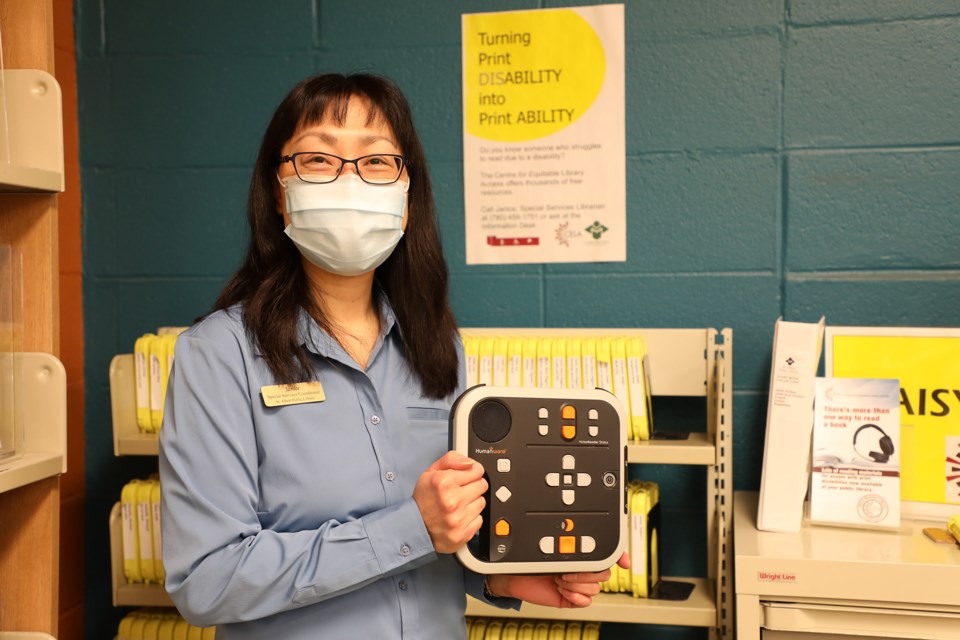There’s a cheery display of an assortment of small yellow disc cases on a shelf in an upstairs corner at the St. Albert Public Library. DAISY discs are sourced from the Centre for Equitable Library Access (CELA) and contain audiobooks made specifically for those who have print disabilities.
Funding for CELA was cut without consultation last fall and then reinstated, for this year, after advocates launched a campaign against the cuts.
“Public libraries are how the materials get to the patrons locally, but it's CELA’s responsibility to actually produce the materials. That's where the funding reduction greatly concerned us, because those DAISY discs that our users at St. Albert Public Library use, they were produced by CELA, using federal funds,” said Peter Bailey, board member of CELA and CEO of the St. Albert Public Library.
On March 16, federal Minister of Employment, Workforce Development and Disability Inclusion, Carla Qualtrough announced the government would be reinstating $1 million in funding for accessible reading materials for the 2021-22 budget year.
Last fall, the federal government announced it would be cutting the annual $4 million spent in funding to CELA and the National Network for Equitable Library Service (NNELS). Funds would be phased out by 25 per cent over the course of four years with no funds being available for the 2024-25 fiscal year.
CELA is an accessible reading service that provides books and other materials to people with print disabilities in Canada. CELA estimates fewer than one in ten books published in Canada are made available in formats accessible for people with print disabilities.
It is also estimated one in ten people have print disabilities in Canada.
“That's 3 million or more Canadians across the country. So public libraries said, ‘You know, it's our duty, it's our responsibility to serve the print disabled. Just like we serve the other members of our community,’” said Bailey.
There were 47 people in the St. Albert area who accessed 2,741 accessible reading materials from CELA over the course of last year. There were two people who accessed CELA material directly from the St. Albert Public Library.
“The numbers are small – you think, ‘Two people? That doesn't seem like a lot.’ But, again, to those two people, these services are really crucial and really critical,” said Bailey.
Bailey said one of the people sent a note of thanks to the library after it opened back up again in July after being shut due to COVID restrictions. He said even though reliance on physical materials like DAISY discs is declining, it is still important.
“It's still number one right now. It’s still very important right now, but as more tech-savvy younger people age, they're going to be digital natives. They will have been used to using digital tools,” he explained.
Janice Cheung, an employee at the St. Albert Public Library who connects with CELA patrons at the library and also selects titles for the library's DAISY collection, said there are three main reasons why a person would use a DAISY disc reader.
“If you've got a visual disability where you can't read print anymore ... or if you cannot hold the book anymore, for whatever reason – maybe it's really terrible arthritis – (you) can definitely use this. Or maybe there’s some cognitive issues there and it's easier for you to listen, to hear – again, you can use this,” she said.
There are many reasons why the DAISY format is better than, say, an audiobook on a CD for those with print disabilities. The first reason is that an audiobook on a CD has multiple discs. There is only one disc for a DAISY format audiobook.
DAISY readers also have functions specifically for those with print disabilities. The buttons on the readers are large and tell the listener what their function is when pressed. There are also buttons that change the tone and speed of the person reading the audiobook, which is essential for those who might have difficulties hearing different tones.




